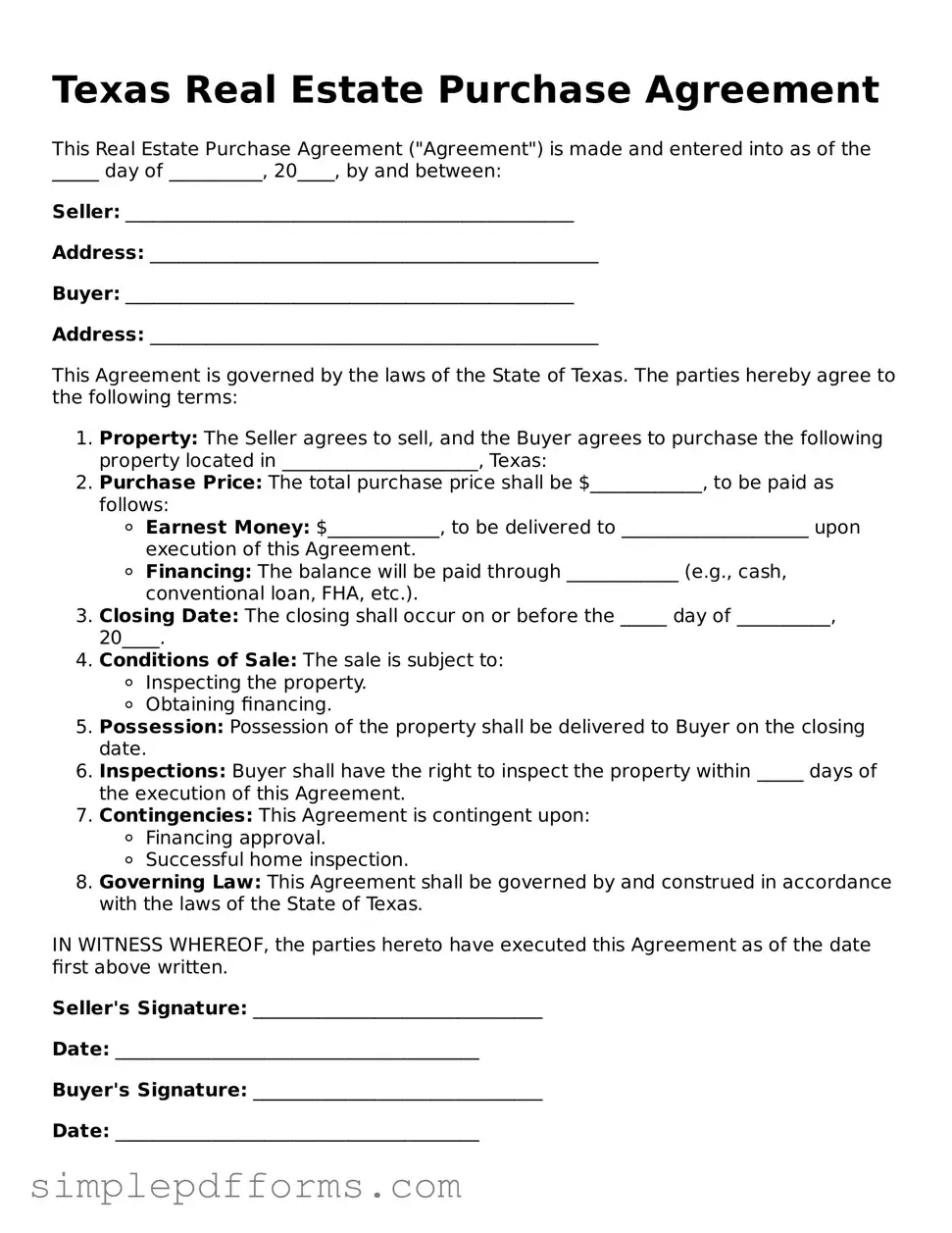Texas Real Estate Purchase Agreement
This Real Estate Purchase Agreement ("Agreement") is made and entered into as of the _____ day of __________, 20____, by and between:
Seller: ________________________________________________
Address: ________________________________________________
Buyer: ________________________________________________
Address: ________________________________________________
This Agreement is governed by the laws of the State of Texas. The parties hereby agree to the following terms:
- Property: The Seller agrees to sell, and the Buyer agrees to purchase the following property located in _____________________, Texas:
- Purchase Price: The total purchase price shall be $____________, to be paid as follows:
- Earnest Money: $____________, to be delivered to ____________________ upon execution of this Agreement.
- Financing: The balance will be paid through ____________ (e.g., cash, conventional loan, FHA, etc.).
- Closing Date: The closing shall occur on or before the _____ day of __________, 20____.
- Conditions of Sale: The sale is subject to:
- Inspecting the property.
- Obtaining financing.
- Possession: Possession of the property shall be delivered to Buyer on the closing date.
- Inspections: Buyer shall have the right to inspect the property within _____ days of the execution of this Agreement.
- Contingencies: This Agreement is contingent upon:
- Financing approval.
- Successful home inspection.
- Governing Law: This Agreement shall be governed by and construed in accordance with the laws of the State of Texas.
IN WITNESS WHEREOF, the parties hereto have executed this Agreement as of the date first above written.
Seller's Signature: _______________________________
Date: _______________________________________
Buyer's Signature: _______________________________
Date: _______________________________________
